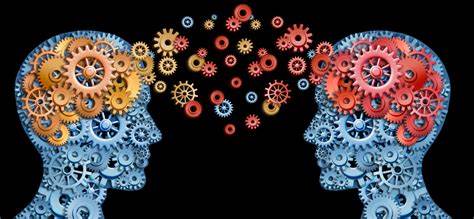
Some scientists think it is futile to even try to identify consciousness in any sort of lab-maintained brain.
“It’s just impossible to say meaningful things about what these bunches of brain cells could think or perceive, given we don’t understand consciousness,” says Steven Laureys, a neurologist at the University of Liège in Belgium, who pioneered some of the imaging-based measures of consciousness in people in a vegetative state.
“We shouldn’t be too arrogant.” Further research should proceed very carefully, he says.
Laureys and others point out that the experience of an organoid is likely to be very different from that of a preterm infant, an adult human or a pig and not directly comparable. Furthermore, the structures in an organoid might be too small to have their activity measured accurately and similarities between the EEG patterns in organoids and preterm baby brains could be coincidental.
Other scientists who work on brain organoids agree with Laureys that the question of whether a system is conscious could be unanswerable. Many avoid the idea entirely.
“I don’t know why we would try to ask that question, because this system is not the human brain,” says Sergiu Pasça, a neuroscientist at Stanford University in California. “They’re made out of neurons, neurons have electrical activity, but we have to think carefully about how to compare them.”
Alysson Muotri, a neuroscientist at the University of California, San Diego (UCSD), wants his organoid systems to be comparable, in at least some ways, with human brains, so that he can study human disorders and find treatments. His motivation is personal: his 14-year-old son has epilepsy and autism. “He struggles hard in life,” Muotri says.
Brain organoids are a promising avenue, because they recapitulate the earliest stages of brain wiring, which are impossible to study as a human embryo develops. But studying human brain disorders without a fully functioning brain, he says, is like studying a pancreas that doesn’t produce insulin.
“To get there, I need a brain organoid model that really resembles a human brain. I might need an organoid that becomes conscious.”
Muotri says he is agnostic about which definition to use to decide whether an organoid reaches consciousness. At some point, he says, organoids might even be able to help researchers answer questions about how brains produce conscious states.
For instance, mathematician Gabriel Silva at UCSD is studying neural activity in Muotri’s organoids to develop an algorithm that describes how the brain generates consciousness6. The goal of his project, which is partially funded by Microsoft, is to create an artificial system that works like human consciousness.
At the moment, there are no regulations in the United States or in Europe that would stop a researcher from creating consciousness. The national academies panel plans to release a report early next year, outlining the latest research and making a judgement on whether regulations are needed. Members plan to weigh in on questions such as whether to obtain people’s consent to develop their cells into brain organoids, and how to study and dispose of organoids humanely.
The International Society for Stem Cell Research is also working on organoid guidelines, but is not addressing consciousness because it doesn’t think the science is there yet.
Hyun says that the NIH neuroethics panel has not yet seen any proposals to create complex, conscious organoids that would necessitate new guidelines. And Muotri says he doesn’t know of anyone else deliberately trying to create conscious organoids either, although a sufficiently complex organoid could, by some definitions, reach that status accidentally.
Still, Muotri and others say they would welcome some guidelines. These could include requiring scientists to justify the number of human brain organoids they use, to use them only for research that cannot be done in any other way, to restrict the amount of pain that can be inflicted on them and to dispose of them humanely.
Having such advice in place ahead of time would help researchers weigh up the costs and benefits of creating conscious entities. And many researchers stress that such experiments have the potential to yield important insights.
“There are truly conscious people out there with neurological disorders with no treatments,” Lancaster says. “If we did stop all of this research because of the philosophical thought experiment,” she adds, “that would be very detrimental to actual human beings who do need some new treatment.”
Treatments could still, however, be tested in brain organoids made using mouse stem cells or in regular animal models. Such experiments could also inform discussions about the ethical use of human organoids.
For instance, Hyun would like to see researchers compare the EEG patterns of mouse brain organoids with those of living mice, which might indicate how well human organoids recapitulate the human brain.
For his part, Muotri sees little difference between working on a human organoid or a lab mouse. “We work with animal models that are conscious and there are no problems,” he says. “We need to move forward and if it turns out they become conscious, to be honest I don’t see it as a big deal.
- A Nature magazine report











